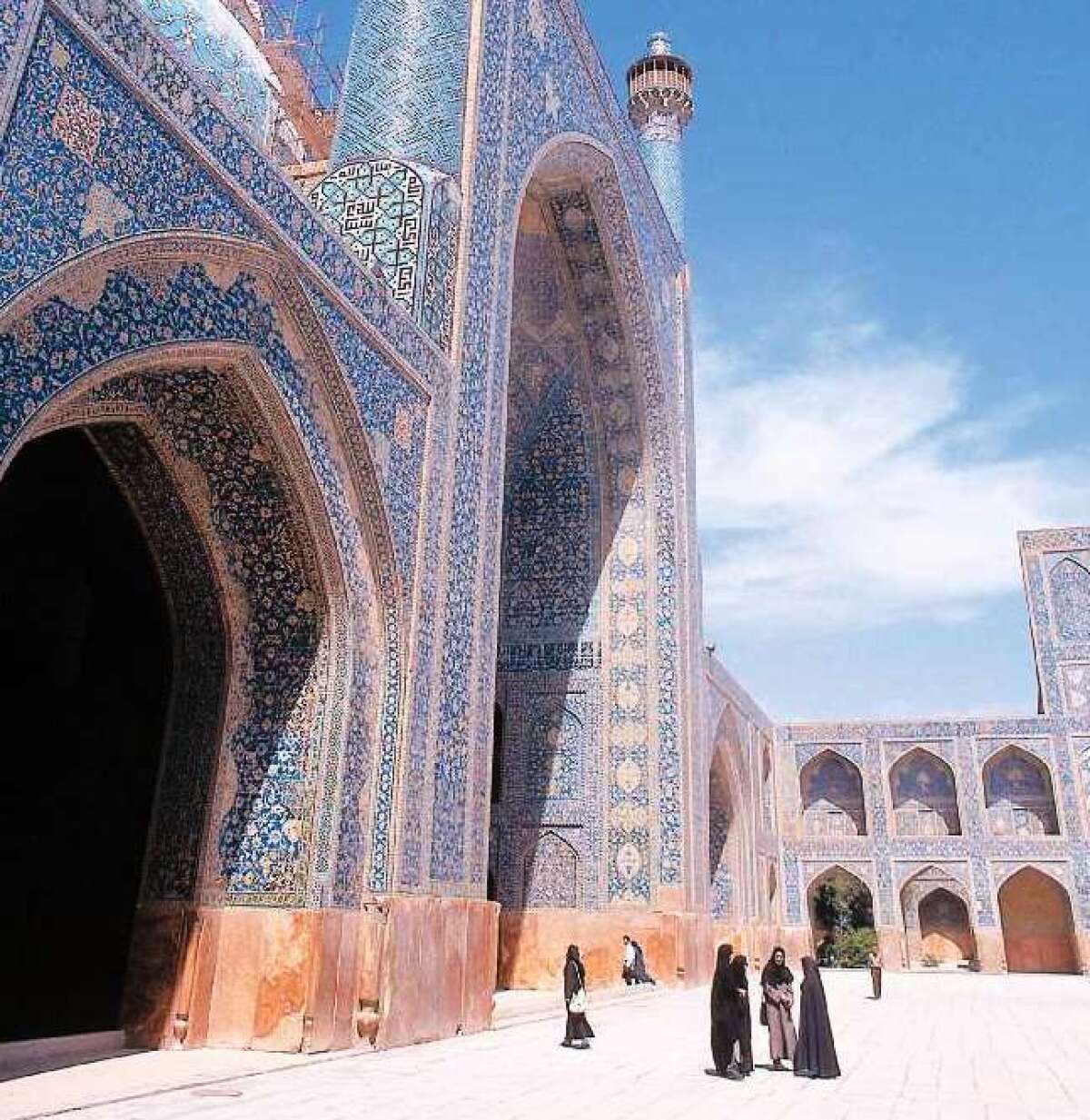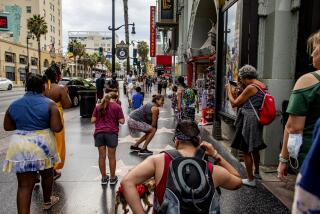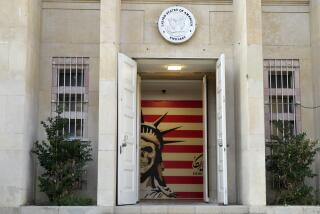Iran wants American tourists, and a boomlet has begun

- Share via
The U.S. and Iran may have miles to go in their negotiations over curtailing Iran’s nuclear ambitions, but the ease in hostility has already produced a boomlet in American travel to Iran.
Three U.S.-based tour operators say they’ve seen a surge of bookings and questions about Iran in recent months. They’ve also heard encouragement from Iranian government officials, who met in New York with several U.S. tour operators during Iranian President Hassan Rouhani’s visit to the city in September.
This sudden flurry of activity doesn’t mean Tehran will be threatening Paris as a tourist magnet; U.S. visitors there are counted in dozens, not thousands. But it’s a notable shift for two countries that have been largely estranged since 1979, when Iranian revolutionaries seized the country and took 52 Americans hostage for more than a year.
Since then, the U.S. and allied countries have used economic sanctions to weaken the Iranian economy and called for Iran to stop developing nuclear capabilities that could be used in warfare. As for Iran as a destination, in a warning updated Nov. 21, the U.S. State Department warned Americans to “carefully consider the risks of travel to Iran” and noted the Iranian officials have detained or imprisoned some American citizens on various charges, including espionage.
Yet the U.S. government has never blocked travel to Iran the way it has restrained travel to Cuba. Thus, when Iran’s new leadership started showing signs of increased openness to the West after Rouhani’s election in June, U.S.-based tour operators quickly saw a jump in curiosity about visiting Iran.
Janet Moore, owner of the Long Beach-based tour operator Distant Horizons, said she arranged Iranian trips for 50-60 U.S. travelers in 2013. In 2014, she expects that number to be at least 250 people, including three trips in connection with the World Affairs Council of Philadelphia and one with the San Francisco-based Commonwealth Club of California.
Barring disasters, Moore said, in 2015 there will be “even more, because we’ve already got departures for UCLA, Berkeley and Stanford” with other university groups bookings likely.
At San Francisco-based Geo Ex (formerly known as Geographic Expeditions) – which has been taking travelers into Iran since the early 1990s and brought 50-60 Americans there in 2013 -- CEO Jean-Paul Tennant said he’s hoping to double traffic to Iran in 2014.
Though it comes across in the popular press as “an unfriendly place for Americans,” Tennant said, GeoEx travelers have returned “raving about the warmth and openness of the Iranian people. Of all the places we at GeoEx send our clients, Iran stands out as the one with the biggest gap between pre-trip perceptions and on-the-ground reality.”
At Seattle-based Caravan-Serai Tours, owner Rita Zawaideh says she’ll probably expand from two group trips to Iran in 2013 to three next year, and she expects to arrange an additional 10 or more individual trips – more than she’s had in the last several years.
In September, Zawaideh and Moore said, they met with Iranian tourism officials in a New York gathering that included several other U.S.-based tour operators. Just to hold such a meeting “was very unusual,” said Moore. “It gave me a lot of encouragement.”
“We in Iran should take the first step in persuading westerners that they should have no fear in coming to Iran,” the Guardian newspaper quoted Mohammad-Ali Najafi , head of Iran’s cultural heritage and tourism organization, saying in October.
But as the tour operators note, much of this growth depends on U.S.-Iranian nuclear agreements. In November, the U.S. was among six major nations to agree with Iran on broad strokes of a deal to freeze Iran’s nuclear program in exchange for an easing of sanctions that have substantially hurt Iran’s economy. Progress has been sporadic since then.
Critics of the November deal, including Israel, contend that it doesn’t require enough Iranian concessions. Iran maintains that its nuclear steps are part of energy development, not weaponry.
Behind the nuclear question, there’s still a mighty quandary for American travelers who disagree with Iran’s theocracy: What is the value of the person-to-person contact you’ll have on a visit? Does that matter more than the money you’ll be adding to the Iranian regime?
Iran, widely known as Persia until the 1930s, has 16 sites listed on Unesco’s World Heritage list. Top attractions include the city of Isfahan (known for its graceful bridges and 18th-century architecture) and the pre-Christian ruins of Persepolis, near Shiraz – both relatively far from Iraq and Afghanistan border zones, which the U.S. State Department urges travelers to avoid.
Though direct flights between the U.S. and Iran haven’t been offered since 1979, Rouhani in September said he would explore possibilities. In the meantime, Moore said, many travelers fly Turkish Airlines from LAX to Istanbul, then Istanbul to Tehran or Isfahan.
More to Read
Sign up for The Wild
We’ll help you find the best places to hike, bike and run, as well as the perfect silent spots for meditation and yoga.
You may occasionally receive promotional content from the Los Angeles Times.







